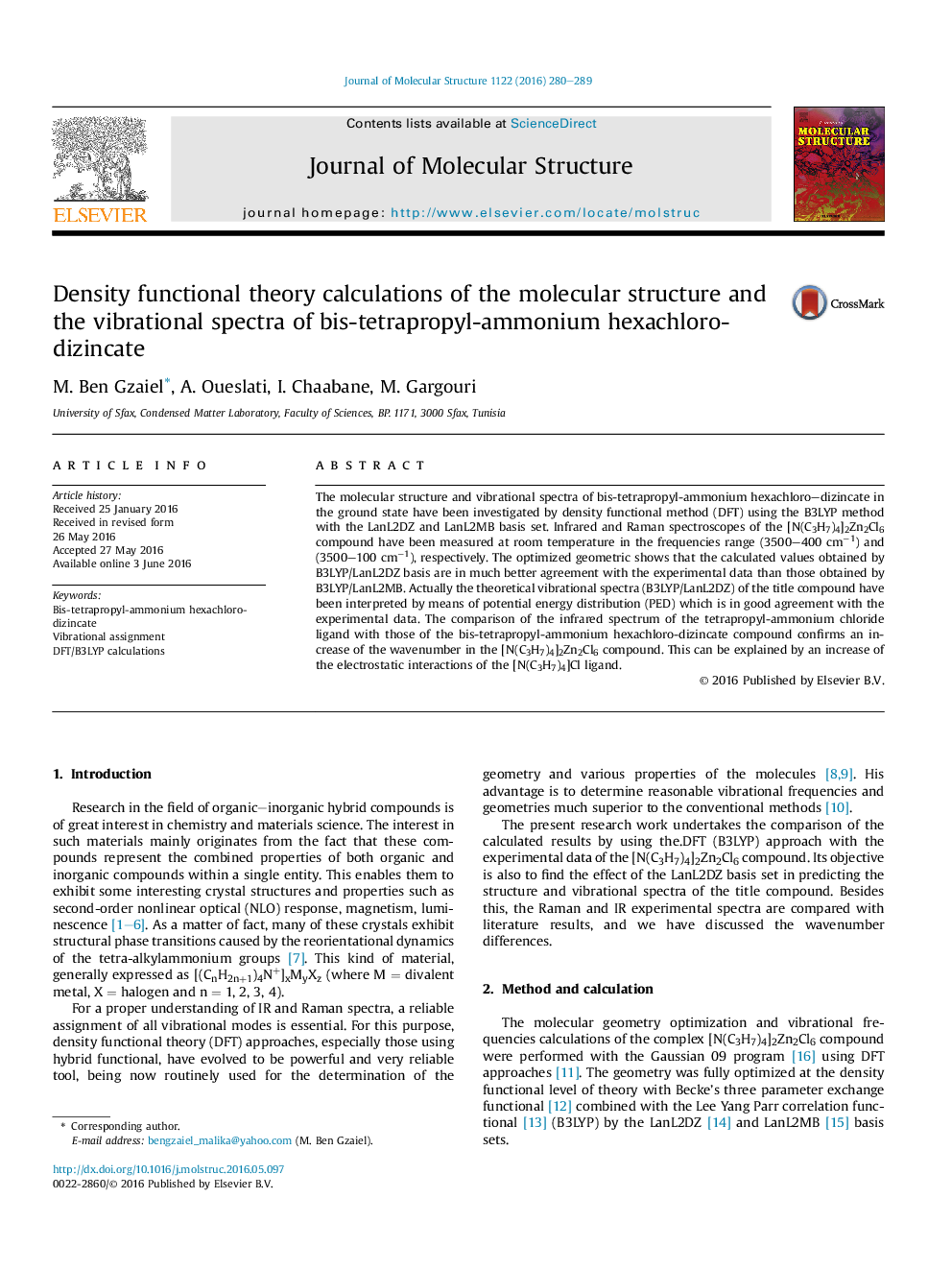| Article ID | Journal | Published Year | Pages | File Type |
|---|---|---|---|---|
| 1407692 | Journal of Molecular Structure | 2016 | 10 Pages |
•The [(C3H7)4N]2Zn2Cl6 compound crystallizes in the triclinic system (P1¯ space group).•The structure of the title compound was optimized by DFT using B3LYP method.•Calculated values obtained by LanL2DZ are in much better with the experimental data.•Theoretical vibrational spectra have been interpreted by means of PED.•RMS values have been calculated.
The molecular structure and vibrational spectra of bis-tetrapropyl-ammonium hexachloro–dizincate in the ground state have been investigated by density functional method (DFT) using the B3LYP method with the LanL2DZ and LanL2MB basis set. Infrared and Raman spectroscopes of the [N(C3H7)4]2Zn2Cl6 compound have been measured at room temperature in the frequencies range (3500–400 cm−1) and (3500–100 cm−1), respectively. The optimized geometric shows that the calculated values obtained by B3LYP/LanL2DZ basis are in much better agreement with the experimental data than those obtained by B3LYP/LanL2MB. Actually the theoretical vibrational spectra (B3LYP/LanL2DZ) of the title compound have been interpreted by means of potential energy distribution (PED) which is in good agreement with the experimental data. The comparison of the infrared spectrum of the tetrapropyl-ammonium chloride ligand with those of the bis-tetrapropyl-ammonium hexachloro-dizincate compound confirms an increase of the wavenumber in the [N(C3H7)4]2Zn2Cl6 compound. This can be explained by an increase of the electrostatic interactions of the [N(C3H7)4]Cl ligand.
